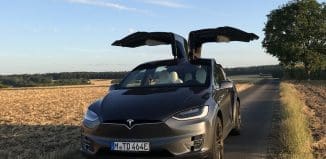Stealth and Low Heat: The New ZH2 Vehicle

This post is also available in:  עברית (Hebrew)
עברית (Hebrew)
A new energy-efficient vehicle that operates on hydrogen fuel has been unveiled during the US Army Annual Meeting and convention.
The ZH2 hydrogen fuel cell electric vehicle developed by the US Army Tank Automotive Research, Development and Engineering Center (TARDEC) and General Motors, operates on hydrogen fuel instead of traditional diesel and uses a lot less fuel than traditional tactical vehicles.
“At idle, it is extremely efficient. This should reduce the logistics train,” Kevin Centeck, team leader for Non-Primary Power Systems, Ground Vehicle Power and Mobility Directorate, TARDEC, said in a statement.
According to defenseworld.net, the ZH2 has a radically reduced thermal signature because it doesn’t operate as hot as a diesel engine. This gives additional stealth for Soldiers, since the heat signature is harder to pick up by enemy sensors.
Another advantage is that the ZH2 hydrogen fuel cell electric vehicle prototype uses hydrogen with electric power and has an extremely low acoustic signature, meaning it’s very quiet. Hence it does not make soldier to give away his position by turning the engine or hearing the diesel engine while driving. Finally, less-direct, but nonetheless important advantage is that the Army wanted to demonstrate that a vehicle of this type could be built rapidly using mostly off-the-shelf parts. This took just one year from concept to delivery. The vehicle itself is basically a Chevy Colorado platform.
The development of the vehicle is a “collaborative effort” between TARDEC and GM, with collaboration on evaluations and fuel-stack testing.




























